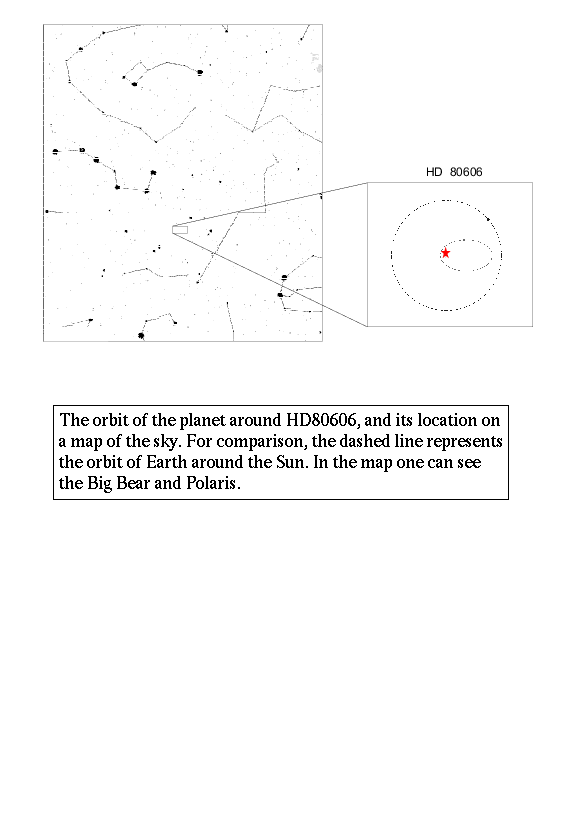-
Msword: press.doc ,
hd80606map.doc
Postscript: press.ps.gz , hd80606map.ps.gz
Discovery of additional planets
outside the solar system
An international team, including scientists from Switzerland, USA, Israel and France, has discovered two extra-solar planets orbiting two distant stars.
The Israeli team includes Prof. Tsevi Mazeh, director of the Sackler Institute of Astronomy at Tel Aviv University, Mr. Shay Zucker, who is currently finishing his Ph.D. studies, and Dr. Gavriel Drukier.
An American-Israeli cooperation, using the largest earth-based telescope in Hawaii (the Keck telescope), found evidence for the existence of these objects, most probably planets, almost two years ago. Follow-up observations, conducted by a Swiss team in southern France, allowed a detailed monitoring of the planets' orbits. An announcement concerning these new planets, together with some other planets discovered by the Swiss team, is released today simultaneously in Israel and Europe.
The newly discovered planets are located at a distance of about 200 light-years from Earth. One of them orbits the star HD 80606, a star in the vicinity of the Ursa Major constellation ("Big Bear"), near the star Talitha. The second planet orbits HD 178911, a star in the Lyra constellation.
Most eccentric orbit so far
One of the two planets - the one orbiting HD 80606 - moves in a very eccentric (elliptic) orbit - almost like an orbit of a comet. Because of this eccentricity, its minimal distance from its sun is about 30 times smaller than its maximal distance. No other planet was found which comes so near to its sun like the discovered one. Prof. Mazeh supposes that in its nearest point to its sun, the radiation heats the planet to a temperature of more than 1000 degrees (K).
Such an eccentric orbit poses a challenge to the astronomical community. In the past, scientists expected planets to move in circular orbits, like the planets in our own solar system. In recent years a few planets have been discovered in eccentric orbits, albeit not as extremely eccentric as the orbit of the new planet. This discovery may hint to new ideas about the formation mechanisms of planets.
The second planet was found to reside in a system of three suns, two of them moving as a very close pair and the third one, more distant, orbiting this close pair. The planet orbits the distant sun. An imaginary observer situated at the planet, would sometimes see three suns in its sky - probably a spectacular sight, which is obviously impossible in our solar system.
The discovery of this planet raises questions about the influence of the system complexity on the formation of planets and the interaction between the two close suns and the planet orbit. These questions and others will probably keep the minds of the astronomers busy for at least the next few years.
